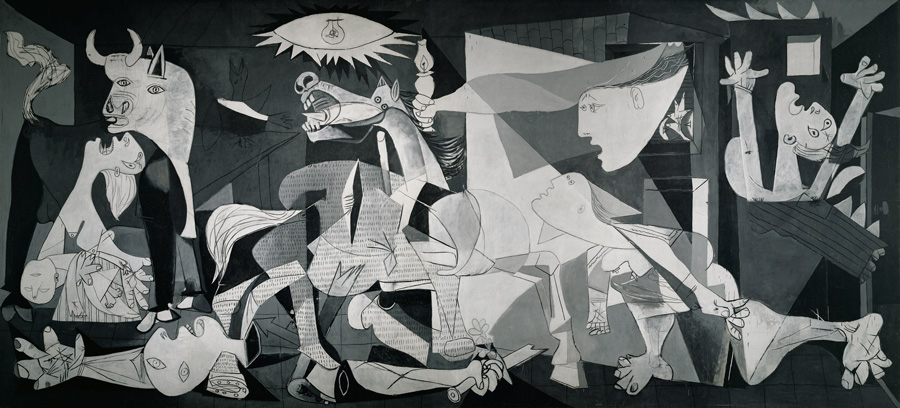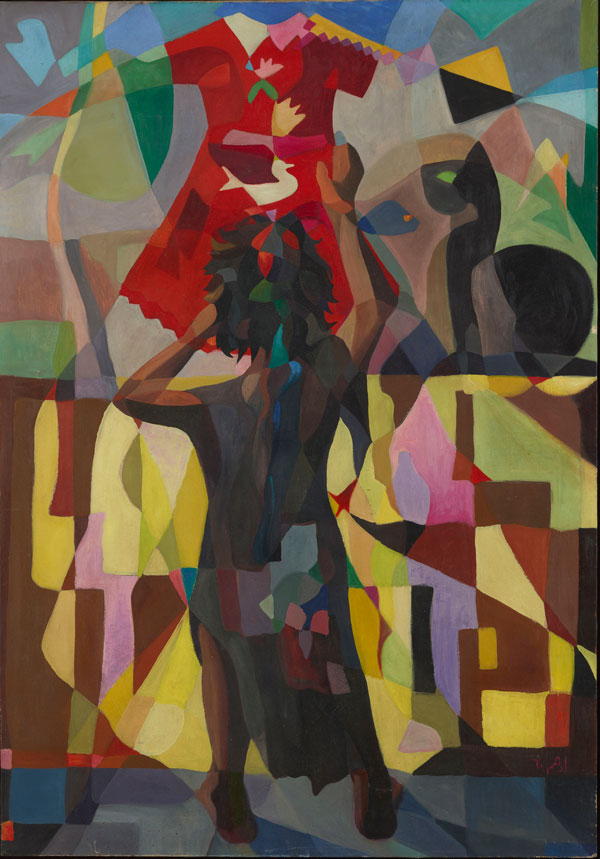Guernica, a touchstone for politically committed painters: <br>When activism went hand in hand with anticolonialism
Politically committed art took on three forms in the Arab world from the 1930s onward: socialism, anticolonialism, and pan-Arab nationalism. Artists were viewed as drivers of progress. In Egypt, in 1938, one year after it was painted, Picasso's Guernica appeared at the beginning of the manifesto by the Egyptian surrealists titled Vive l'art dégéneré, and it was that same year when an Arab country, the Kingdom of Egypt, participated for the first time in a landmark world art event, the 20th Venice Biennale. Following a central theme in his political commitment as an artist, the Egyptian Samir Rafi painted numerous scenes attesting to the revolt against war and tyranny. Early on, as a teenage student, he had shared the rejection of authoritarian regimes with his Egyptian surrealist elders, showing his work alongside them. Rafi lived in Paris for some time and then left for Algeria to fight with the FLN (the Algerian National Liberation Front). After returning to France, and while keeping strong ties to Egypt, he painted his despair over the Arab-Israeli wars.

The Syrian Mahmoud Hammad's Caïn & Abel, which engaged in a dialogue with Picasso's Cézannist Cubism, is from 1958, the year Syria and Egypt merged into a United Arab Republic—an iconic moment for the socialist pan-Arabism of which Hammad was an ardent advocate. Similarly, Adham Ismail, from a more dynamic perspective, was the promoter of a united pan-Arabism both in the artistic realm of Arab modernity and in the political sphere. His Jeune Mendiante et la belle robe [The Young Beggar and the Beautiful Dress] convey a demand for social justice that is recurrent in his work. In Syria, the Manifesto of the Plastic Arts Movement, signed by Fateh al-Moudarres in 1962 and not devoid of a strong nationalist sentiment, stipulated that art could only be politically committed and reaffirmed the artist's social responsibility: Arab artists had to embody the Arab spirit in order to enrich humankind with its uniqueness. It is worth noting that the manifesto only mentions one artist, Cézanne: "We agree with Cézanne in rejecting literary ideas." Fateh al-Moudarres also wrote a ten-page article in Arabic focusing specifically on Picasso and titled "How Do We Understand Picasso?".





 Summary
Summary